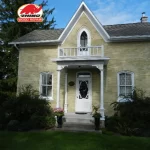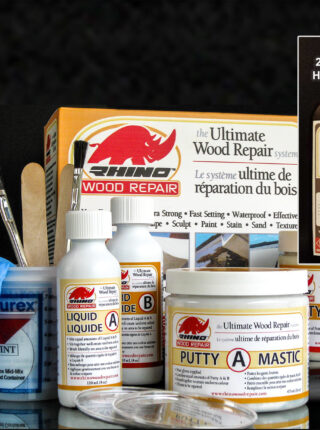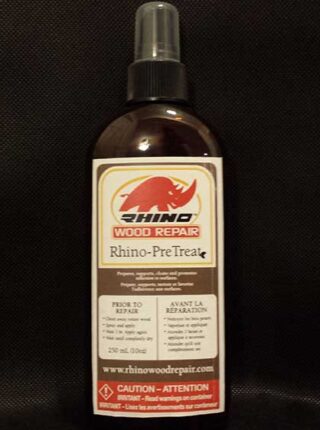Wood is a remarkably durable and versatile material, widely used in construction, furniture, and various other applications. However, despite its strength, wood is susceptible to rot and decay under certain conditions. Knowing how long it takes for wood to rot can help you take preventive measures and address any issues promptly before they escalate. In this comprehensive guide, we’ll explore the factors that influence wood rot and provide insights into the typical timeline for this process to occur.
Factors Affecting Wood Rot
Moisture Content
Moisture is the primary catalyst for wood rot. Wood with a moisture content above 20% creates an ideal environment for fungi and bacteria to thrive, leading to the breakdown of the wood’s cellular structure. Sources of moisture can include excessive humidity, leaks, poor ventilation, or direct exposure to water.
Wood Type
Different wood species have varying levels of natural resistance to rot. Hardwoods like oak and teak tend to be more resistant than softwoods like pine or cedar. The density and chemical composition of the wood play a significant role in its durability against rot and decay.
Environmental Conditions
Temperature, humidity, and exposure to sunlight can all impact the rate at which wood rots. Generally, warm and humid environments with limited air circulation provide ideal conditions for fungi and bacteria to thrive, accelerating the rot process.
Typical Timelines for Wood Rot
While the exact timeline can vary depending on the specific conditions, here are some general guidelines for how long it takes for wood to rot:
Untreated Wood in Ideal Conditions
In optimal conditions for rot, such as high moisture levels, warm temperatures, and poor ventilation, untreated wood can begin to show signs of decay within a few months. Significant structural damage can occur within 1-2 years if the conditions persist.
Treated or Naturally Rot-Resistant Wood
Wood that has been treated with preservatives or naturally rot-resistant species like cedar or redwood can take significantly longer to rot. Under ideal conditions, treated wood may not show signs of decay for several years, while naturally rot-resistant wood can last up to a decade or more before succumbing to rot.
HWell-Maintained and Protected Wood
Wood that is properly maintained, protected from moisture, and kept in well-ventilated environments can have an exceptionally long lifespan. With regular inspection and prompt repairs, well-maintained wood structures and furniture can last for decades or even centuries before experiencing significant rot issues.
Preventing and Addressing Wood Rot
While wood rot is an inevitable process, there are several steps you can take to slow it down and preserve the integrity of your wood surfaces:
- Proper Ventilation: Ensure adequate airflow and ventilation to prevent moisture buildup.
- Moisture Control: Address any sources of excess moisture, such as leaks or condensation.
- Wood Treatment: Consider using rot-resistant wood species or applying preservative treatments.
- Regular Maintenance: Inspect wood surfaces regularly and address any signs of rot or decay promptly.
- Use Rhino Wood Repair: For existing rot damage, Rhino Wood Repair by Stellchem offers a comprehensive solution to restore and protect your wood surfaces.

FAQs
- Can wood rot occur in dry conditions?
While moisture is the primary catalyst for wood rot, extremely dry conditions can also lead to the deterioration of wood over time. However, this process is much slower and less severe compared to rot caused by moisture. - Is wood rot contagious?
Yes, wood rot can spread from an affected area to surrounding wood surfaces if the conditions are favourable. Prompt treatment and isolation of the affected areas are crucial to prevent further spread. - Can painted or sealed wood still rot?
While paint and sealants can provide some protection, wood can still rot if moisture penetrates the surface or if the coatings are compromised over time. - Is it safe to use rotted wood for structural applications?
No, rotted wood should never be used for structural purposes as it can compromise the integrity and safety of the structure. Prompt repair or replacement is necessary for any load-bearing or structural wood components that have experienced rot. - Can wood rot be reversed or repaired?
In some cases, early stages of wood rot can be addressed and repaired using specialized wood restoration products like Rhino Wood Repair. However, severely rotted wood may need to be removed and replaced entirely.
By understanding the factors that contribute to wood rot and taking proactive measures, you can significantly extend the lifespan of your wood surfaces and structures. Regular maintenance, proper ventilation, and addressing any moisture issues promptly are key to preventing and minimizing the impact of wood rot. See our wood rot repair treatments here.
 Frequently Asked Questions
Frequently Asked Questions Videos
Videos Colourful Chemist cooks up wood-repair product
Colourful Chemist cooks up wood-repair product Custom Adhesive Epoxies & Formulations
Custom Adhesive Epoxies & Formulations THE SIMPLE SOLUTION TO A DIFFICULT PROBLEM.
THE SIMPLE SOLUTION TO A DIFFICULT PROBLEM.




 Rhino Wood Repair for Log Homes Looking to combat wood rot on your log home? Enter Rhino Wood Repair — the vanguard of wood restoration, with a legacy spanning over three decades. Led by Robin Pixner, a visionary in the field of wood preservation, our mission is simple yet profound: to breathe new life into aging wood, to fortify its strength, and to ensure that the legacy of log homes endures for generations to come.
Rhino Wood Repair for Log Homes Looking to combat wood rot on your log home? Enter Rhino Wood Repair — the vanguard of wood restoration, with a legacy spanning over three decades. Led by Robin Pixner, a visionary in the field of wood preservation, our mission is simple yet profound: to breathe new life into aging wood, to fortify its strength, and to ensure that the legacy of log homes endures for generations to come. Wood Epoxy
Wood Epoxy
